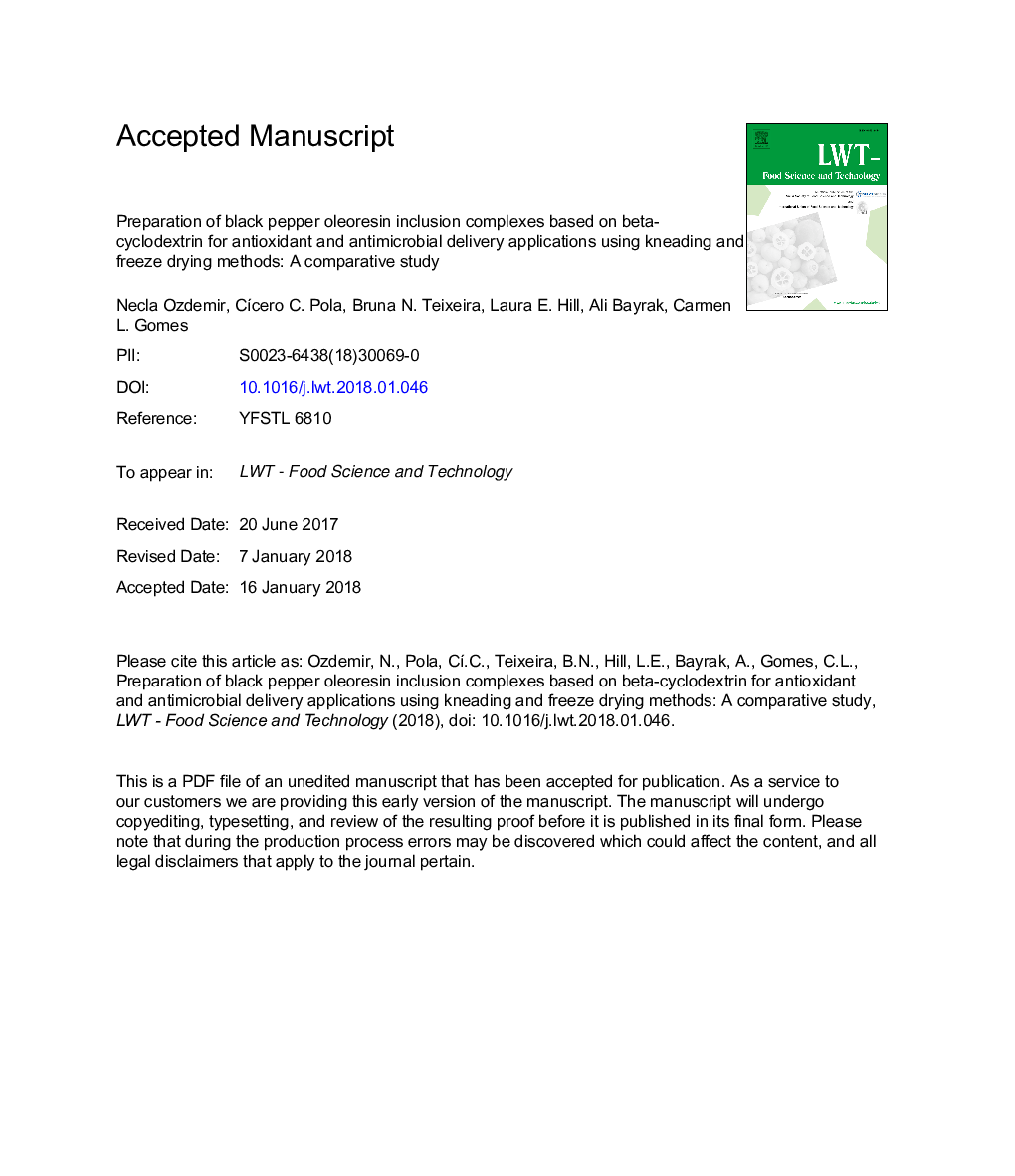| Article ID | Journal | Published Year | Pages | File Type |
|---|---|---|---|---|
| 8891881 | LWT - Food Science and Technology | 2018 | 26 Pages |
Abstract
Black pepper oleoresin (BPO) is a valuable pepper product since it includes both flavor and pungency; however, these compounds are sensible to environmental conditions. β-cyclodextrins (BCD) can be used to encapsulate BPO and potentially enhance its applicability. BCD inclusion complexes can be produced by several methods; however, to date there are no studies, which directly compares how different microencapsulation methods affect BPO inclusion complexes functional properties. This study aimed to synthesize BPO-BCD inclusion complexes using freeze drying (FD) and kneading (KN) methods and compare their physico-chemical, antioxidant and antimicrobial properties. BPO encapsulation in BCD by both methods were confirmed by thermal and phase solubility results. Particle sizes ranged from 393 to 607â¯nm and entrapment efficiencies from 90.2 to 79.3% for KN and FD methods, respectively. Encapsulation method did not influence (pâ¯<â¯.05) either the total phenolic content or the antioxidant activity. KN-BPO-inclusion complexes were more effective in inhibiting Listeria monocytogenes growth than FD-BPO-inclusion complexes, while neither inclusion complexes were able to inhibit Escherichia coli O157:H7 at tested concentrations. Therefore, KN encapsulation method using BCD can be useful to maintain BPO active properties for longer time, being applicable to delay oxidative reactions and inhibit Gram-positive microorganism growth in food products.
Related Topics
Life Sciences
Agricultural and Biological Sciences
Food Science
Authors
Necla Ozdemir, CÃcero C. Pola, Bruna N. Teixeira, Laura E. Hill, Ali Bayrak, Carmen L. Gomes,
